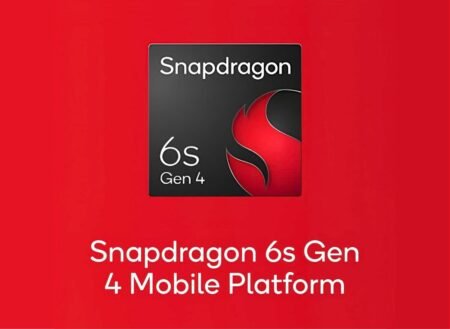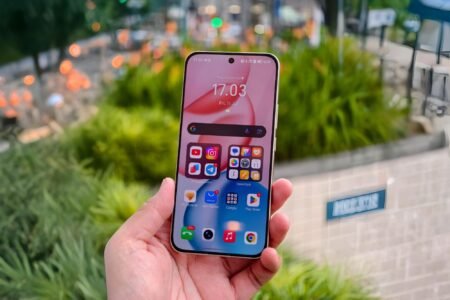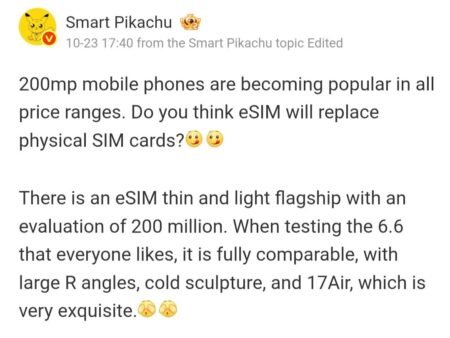Google has just released the first developer preview of Android 15, the next major version of its mobile operating system. This is the ninth year that Google has given developers an early glimpse of the future of Android, and the fifth year that the preview has started in February. The goal is to give developers more time to test their apps, provide feedback, and take advantage of the new features and APIs that Android 15 offers.

Privacy and Security Enhancements
One of the main themes of Android 15 is protecting user privacy and security. Android 15 includes the latest versions of the Privacy Sandbox on Android and Health Connect, two initiatives that aim to improve user privacy and enable effective, personalized advertising experiences for mobile apps. The Privacy Sandbox on Android is a set of technologies that allow apps to access relevant data without revealing personal information or compromising user trust. Health Connect is a secure and centralized platform that allows users to manage and share their health and fitness data with apps that they trust.
Android 15 also introduces a new feature called partial screen sharing, which lets users share or record only a specific app window instead of the entire device screen. This can help users protect their sensitive information or personal preferences from being exposed to other apps or people. Additionally, Android 15 supports Casting from Android 14 QPR2, which lets users cast their device screen to a nearby TV or speaker.
Another privacy and security improvement in Android 15 is the new FileIntegrityManager, which leverages the fs-verity feature in the Linux kernel to protect files with custom cryptographic signatures. This can help prevent potential malware or unauthorized file modifications that could compromise the app’s functionality or data.
New Features for Creators
Android 15 also brings new features and APIs that support creators, such as developers, musicians, and photographers. One of the highlights is the new In-app Camera Controls, which give developers more control over the camera hardware and its algorithms on supported devices. Developers can use the available extensions to enhance the camera performance and quality, such as:
- Low light enhancements that boost the brightness of the camera preview.
- Advanced flash strength adjustments that enable precise control of flash intensity in both SINGLE and TORCH modes while capturing images.
Another feature for creators is the extended support for Universal MIDI Packets (UMP) to virtual MIDI apps. This allows composition apps to control synthesizer apps as a virtual MIDI 2.0 device, as if they were USB MIDI 2.0 devices. This can enable more expressive and dynamic musical interactions between apps.
Performance and Quality Improvements
Android 15 also focuses on improving the performance and quality of apps, especially games and other performance-intensive apps. Android 15 offers new capabilities through the Android Dynamic Performance Framework (ADPF), which lets apps interact more directly with the power and thermal systems of Android devices. Some of the benefits of using ADPF include:
- A power-efficiency mode for hint sessions that indicate that their associated threads should prefer power saving over performance, great for long-running background workloads.
- GPU and CPU work durations can both be reported in hint sessions, allowing the system to adjust CPU and GPU frequencies together to best meet workload demands.
- Thermal headroom thresholds to interpret possible thermal throttling status based on headroom prediction.
Finally, Android 15 also adds more OpenJDK APIs, including quality-of-life improvements around NIO buffers, streams, security, and more. These APIs can help developers write more efficient and secure code for their apps.
How to Get Android 15 Developer Preview 1
Android 15 Developer Preview 1 is available for the Pixel 6, Pixel 6 Pro, Pixel 6a, Pixel 7, Pixel 7 Pro, Pixel 7a, Pixel Tablet, Pixel Fold, Pixel 8, and Pixel 8 Pro, as well as the Android Emulator. The preview is intended for developers only and not for daily or consumer use. It is only available via manual download and flashing/sideloading today, with the public-facing Android Beta coming later in April.
Google also warns that there are some known issues with the preview, such as:
- An issue with sideloading the Developer Preview 1 build can sometimes cause the device to show a “Device is corrupted” message after sideloading is completed. To work around this issue, Google recommends that developers flash a factory image to test devices whenever possible instead of sideloading an OTA system image.
- If you’re on Android 14 QPR3, Google recommends “you move to Developer Preview 1 now.” Otherwise you may run into time periods where the Android 14 Beta will have a more recent build date which will prevent you from going directly to the Android 15 Developer Preview without doing a data wipe.
You can check out the full guide on how to install Android 15 below.
How to install Android 15 Developer Preview 1
Discover more from wazzuptechph
Subscribe to get the latest posts sent to your email.







